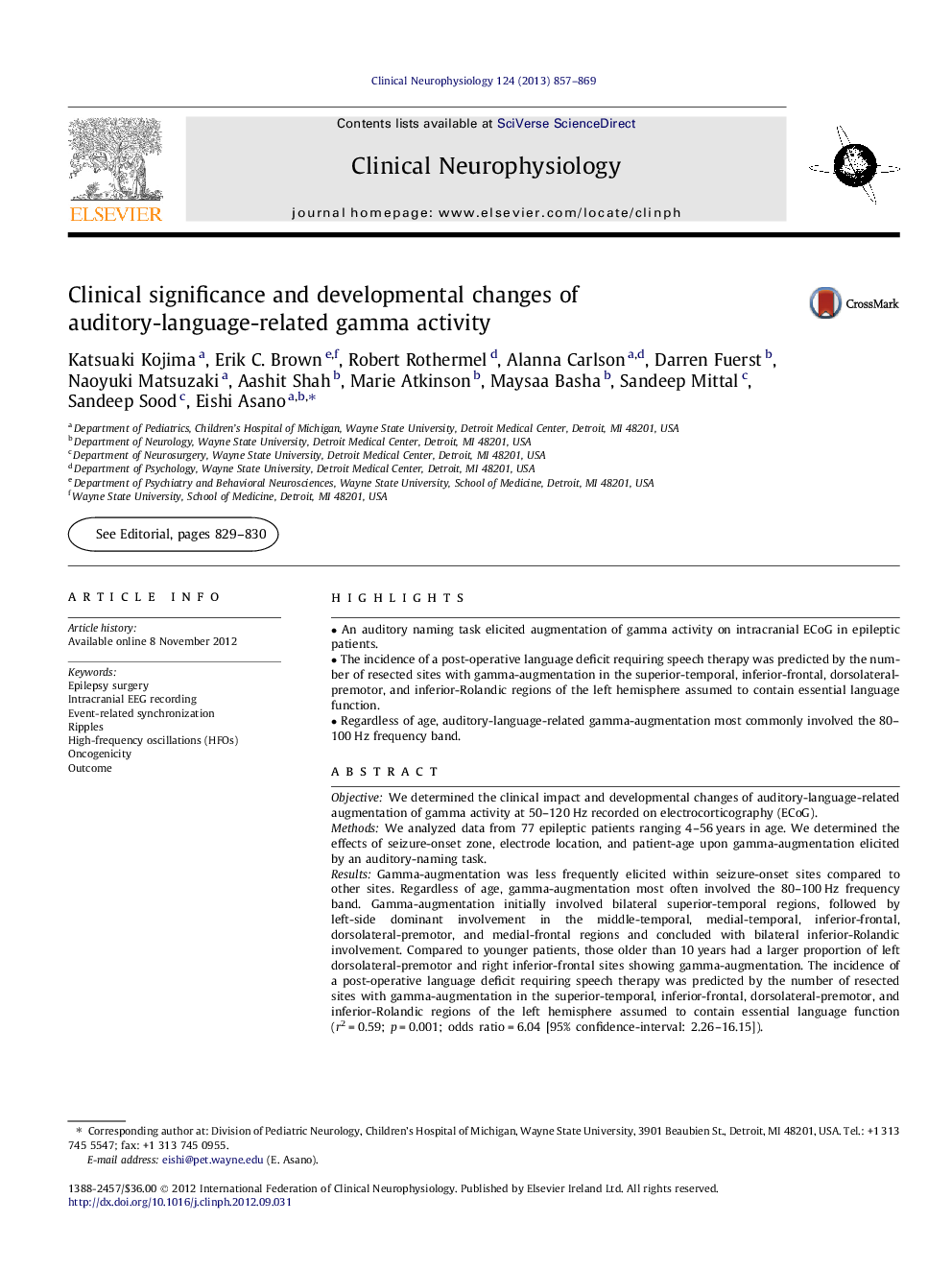| Article ID | Journal | Published Year | Pages | File Type |
|---|---|---|---|---|
| 3044325 | Clinical Neurophysiology | 2013 | 13 Pages |
ObjectiveWe determined the clinical impact and developmental changes of auditory-language-related augmentation of gamma activity at 50–120 Hz recorded on electrocorticography (ECoG).MethodsWe analyzed data from 77 epileptic patients ranging 4–56 years in age. We determined the effects of seizure-onset zone, electrode location, and patient-age upon gamma-augmentation elicited by an auditory-naming task.ResultsGamma-augmentation was less frequently elicited within seizure-onset sites compared to other sites. Regardless of age, gamma-augmentation most often involved the 80–100 Hz frequency band. Gamma-augmentation initially involved bilateral superior-temporal regions, followed by left-side dominant involvement in the middle-temporal, medial-temporal, inferior-frontal, dorsolateral-premotor, and medial-frontal regions and concluded with bilateral inferior-Rolandic involvement. Compared to younger patients, those older than 10 years had a larger proportion of left dorsolateral-premotor and right inferior-frontal sites showing gamma-augmentation. The incidence of a post-operative language deficit requiring speech therapy was predicted by the number of resected sites with gamma-augmentation in the superior-temporal, inferior-frontal, dorsolateral-premotor, and inferior-Rolandic regions of the left hemisphere assumed to contain essential language function (r2 = 0.59; p = 0.001; odds ratio = 6.04 [95% confidence-interval: 2.26–16.15]).ConclusionsAuditory-language-related gamma-augmentation can provide additional information useful to localize the primary language areas.SignificanceThese results derived from a large sample of patients support the utility of auditory-language-related gamma-augmentation in presurgical evaluation.
► An auditory naming task elicited augmentation of gamma activity on intracranial ECoG in epileptic patients. ► The incidence of a post-operative language deficit requiring speech therapy was predicted by the number of resected sites with gamma-augmentation in the superior-temporal, inferior-frontal, dorsolateral-premotor, and inferior-Rolandic regions of the left hemisphere assumed to contain essential language function. ► Regardless of age, auditory-language-related gamma-augmentation most commonly involved the 80–100 Hz frequency band.
